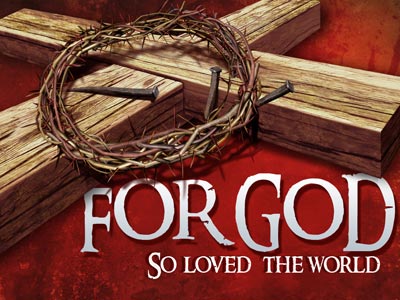-
Facing The Sign Of The Son Of Man Series
Contributed by W Pat Cunningham on Nov 28, 2017 (message contributor)
Summary: How shall we acknowledge the sacrifice of Christ re-presented in the Mass: by facing together in prayer the cross--the sign of the Son of Man.
January 17, 2011
St. Anthony of the Desert
Spirit of the Liturgy
New wine does not go into old wineskins, so the synagogue-Temple services, on which the Catholic Mass is based, have been replaced by the Liturgy of the Word and the re-presentation of the Calvary sacrifice. Here, the great High Priest, Jesus Christ, offers up the one sacrifice by His union with the human priest, who stands in persona Christi capite. God ordained this Eucharist as the perfect worship during this time between the Ascension and the Return of Christ, our King. The key word in this passage from the Letter to the Hebrews is obedience. Our act of worship is our processing together toward the coming Lord, toward the kingdom of God. We turn to the east, to the Rising Sun from on high who has visited us, and say “Amen,” “Yes, Lord,” “Thy will be done on earth as it is in heaven.”
The Holy Father wrote of this in The Spirit of the Liturgy: “The common turning toward the east was not a ‘celebration toward the wall’; it did not mean that the priest ‘had his back to the people’: the priest himself was not regarded as so important. . .in the Christian liturgy the congregation looked together ‘toward the Lord’. As . . .Jungmann put it, it was much more a question of priest and people facing in the same direction, knowing that together they were in a procession toward the Lord. They did not close themselves into a circle; they did not gaze at one another; but as the pilgrim People of God they set off for the Oriens, for the Christ who comes to meet us.”
Now that does not mean that we must “simply replicate the past. Every age must discover and express the essence of the liturgy anew. The point is to discover this essence amid all the changing appearances.” It’s like seeing the Bread of Life and discovering that its substance is more than its accidental appearances. The Holy Father continues: “when the altar was very remote from the faithful, it was right to move it back to the people.” In San Fernando, the altar was moved several meters into the nave of the cathedral. “It was also important clearly to distinguish the place for the Liturgy of the Word from the place for the properly Eucharistic liturgy. For the Liturgy of the Word is about speaking and responding, and so a face-to-face exchange between proclaimer and hearer does make sense. In the psalm the hearer internalizes what he has heard, takes it into himself, and transforms it into prayer, so that it becomes a response. On the other hand, a common turning to the east during the Eucharistic Prayer remains essential. . .Looking at the priest has no importance. What matters is looking together at the Lord. . .not [in] a closed circle but the common movement forward, expressed in a common direction for prayer.”
So do we move the altar back against the wall? I do believe that when churches are built or renovated, the altar should be arranged so that the clergy can stand on either side. But the Holy Father, after Erik Peterson, reminds us that “Facing east. . .was linked with the ‘sign of the Son of Man’, with the Cross, which announces the Lord’s Second Coming. . .Where a direct common turning toward the east is not possible, the cross can serve as the interior east of faith. It should stand in the middle of the altar and be the common point of focus for both priest and praying community. In this way we obey the ancient call to prayer: ‘conversi ad Dominum’, turn toward the Lord!”
Now I’m not saying that this is going to happen. I cannot make decisions for Holy Spirit parish. But it seems to me that we can profitably take the Holy Father’s advice without spending a dime. This is already done at many of the bishops’ Masses. A modest-sized crucifix is placed at the center of the altar, and becomes the prayer focus during the Eucharistic Prayer. As an alternative, I think we could take the crucifix processional cross–not the one that has a big hole in the middle–at the time of the offering procession and set it right in front of the altar. We would, of course, explain this small change as our way of facing together toward the sign of the Son of Man who is the true center of our worship.
I personally believe that this one change–the first of just a few suggested by the Holy Father–will have benefits we can’t foresee. One will be the reduction in the idea that the clergy are performers. We aren’t performers. We are ministers and servants of the Lord and the people. This one change may make that reality more obvious to both clergy and laity.

 Sermon Central
Sermon Central



